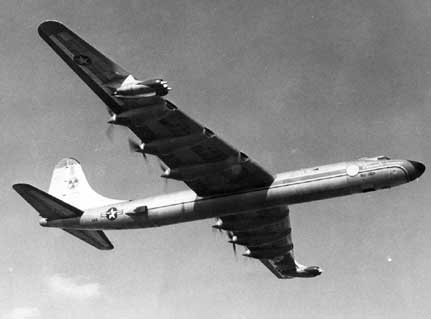
|
"Between
1946 and 1961, the Air Force and the Atomic Energy Commission spent more
than $7 billion trying to develop a nuclear-powered aircraft. Although
no airplane ever flew under nuclear power, the Air Force converted a B-36
bomber, known as the Nuclear Test Aircraft, to carry an operating three-megawatt
air-cooled reactor to assess operational problems (it made 47 flights over
Texas and New Mexico between July 1955 and March 1957). The NB-36H carried
the reactor in its aft bomb bay and incorporated a new nose section, which
housed a 12 ton lead and rubber shielded crew compartment with 10-12 inch
(25-30 centimeters) thick leaded-glass windows. Water pockets in the fuselage
and behind the crew compartment also absorbed radiation (due to weight
constraints, nothing was done to shield the considerable emissions from
the top, bottom or sides of the reactor)." (Source: Brookings
Institute)
In theory, nuclear-powered aircraft could stay in flight for weeks at a time. General Electric built two prototype engines for such a plane. These engines exist today and can be viewed outside the EBR-1 complex in Arco, Idaho.
 One of two HTRE aircraft engines in Arco, Idaho
|



